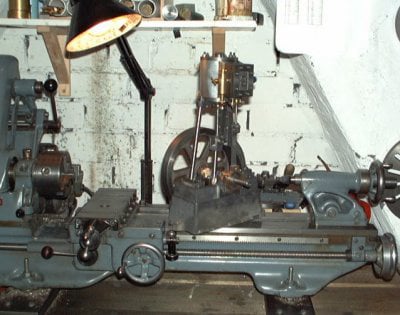
Lathe Set Up
When installing a new lathe or moving a lathe within the workshop it is important to make sure it is set up correctly, in order to get accurate work from it.
This page details one method for setting up the lathe.

When installing a new lathe or moving a lathe within the workshop it is important to make sure it is set up correctly, in order to get accurate work from it.
This page details one method for setting up the lathe.
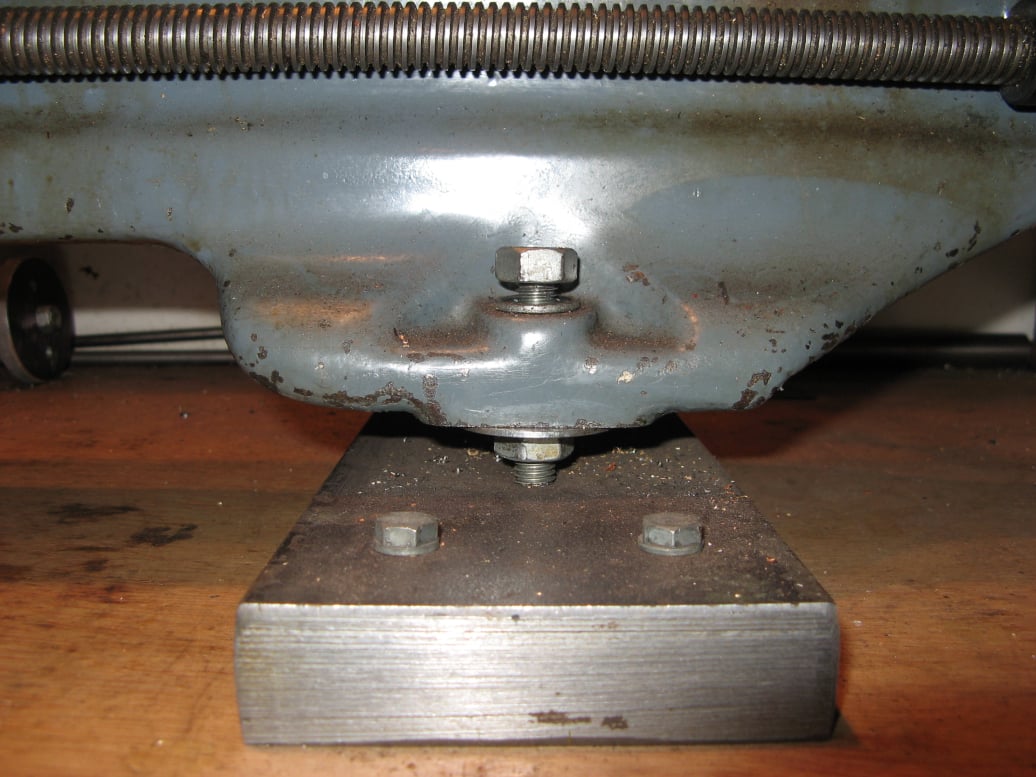
Raising blocks.
Many lathes come with raising blocks which enable the bed to be adjusted. Any lathe which comes on a stand will also have this facility.
But if your lathe doesn't have raising blocks they can be made from a stout piece of steel block and some threaded rod.
The first operation is to place the lathe on the blocks and adjust it so it is level. A spirit level is all that is needed here. To adjust the level the underside nuts on the raising blocks should be adjusted and the top ones left loose.
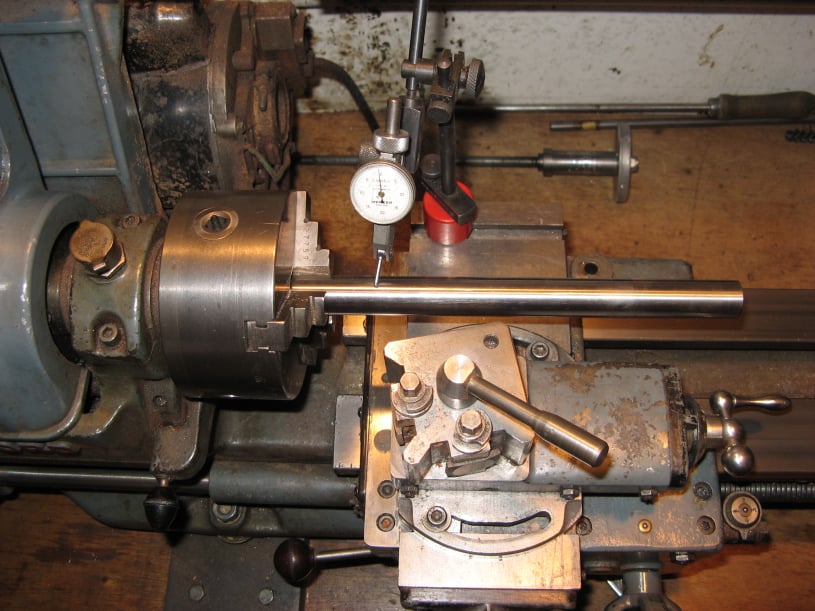
The next thing to so is to secure the lathe by tightening the top nuts on the raising blocks, but it is important not to twist the lathe bed.
To keep an eye on bed twist as you tighten the nuts down, a piece of straight bar mounted in the chuck can be monitored using a DTI.
Any piece of bar will do, but it cannot be assumed to be straight. So with the bar in the chuck and the DTI touching the top edge, the bar should be turned to find the maximum and minimum readings.
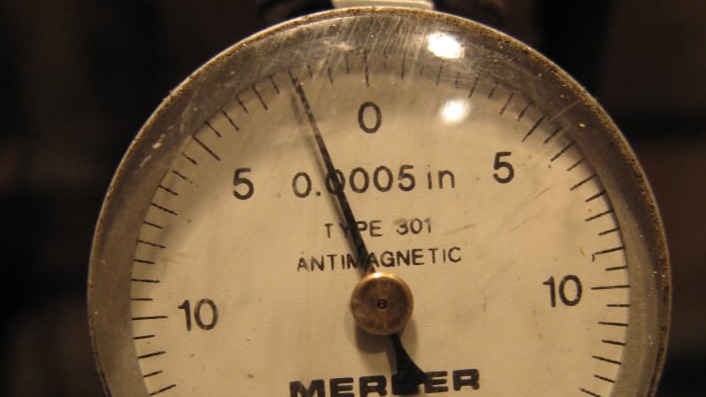
Minimum reading
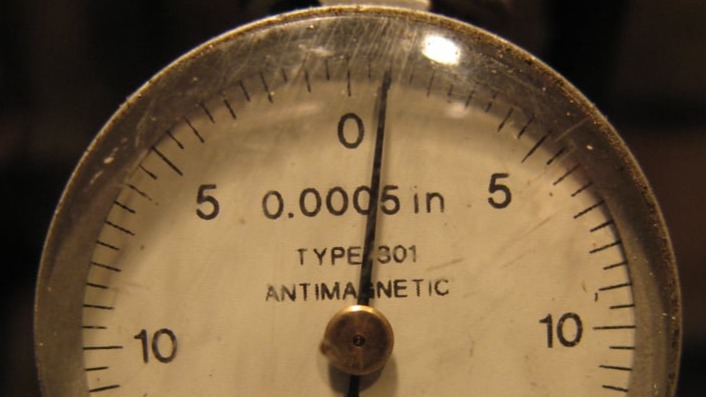
Minimum reading
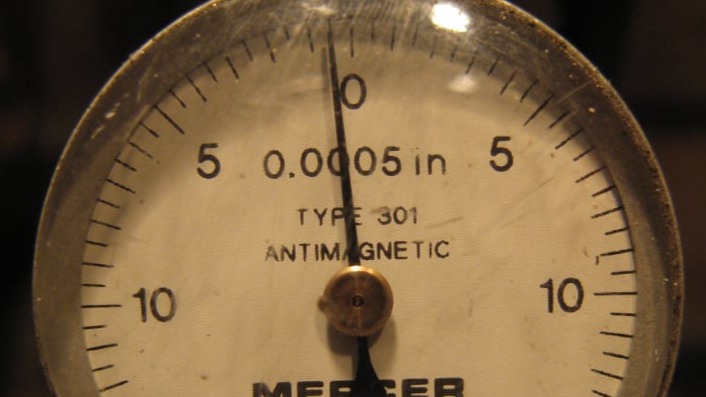
Mid-point
In this orientation the top of the bar can assumed to be straight.
Without turning the chuck any more; the saddle (with DTI on board) can be moved from one end to the other end of the bar where it should show little or no change in the DTI reading. In this position, the bar can be used to monitor the bed twist as the bolts are tightened. Ideally the DTI should read the same both near the chuck and further down the bar, but don't worry if it doesn't. Just ensure that the DTI reading a the end of the bar doesn't change during tightening of the mounting bolts.
With a good quality lathe which was straight to start with, this careful tightening of the bolts should ensure minimum distortion of the bed.
However to fine tune the lathe it is necessary to turn a test piece and compare the diameter near the chuck and further out, to check the lathe is turning parallel.
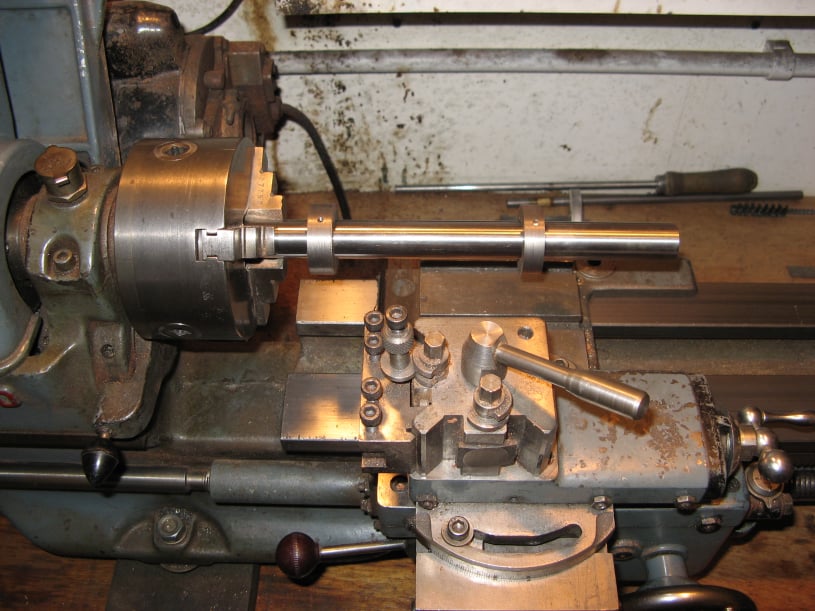
A test bar can be made up which is centre drilled in both ends and has two larger diameter 'working' sections which can be used for this test. These test bars can be purchased or made by brazing some suitable pieces together.
The test bar shown here was actually the same as the bar used previously with two cast iron rings secured with grub screws.
Some light cuts should be taken on the large diameter pieces of the bar with the cross-slide in the same position. The test cuts should be performed with a very light pressure to minimise bar deflection.
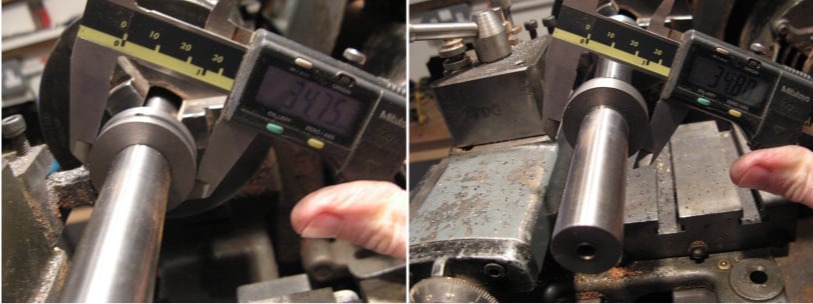
When both diameters are measured, the measurements give the amount the bed must be twisted to bring it perfectly in line with the head-stock.
To twist the bed the tailstock end only is adjusted and the amount of adjustment can be measured by using the DTI on the side on the test bar.
If the tailstock test section is large (as in this case) the bed must be lifted on the front side to increase the cut at the tailstock end. If the diameter is smaller at the tailstock end then the bed should be lowered at the front edge.
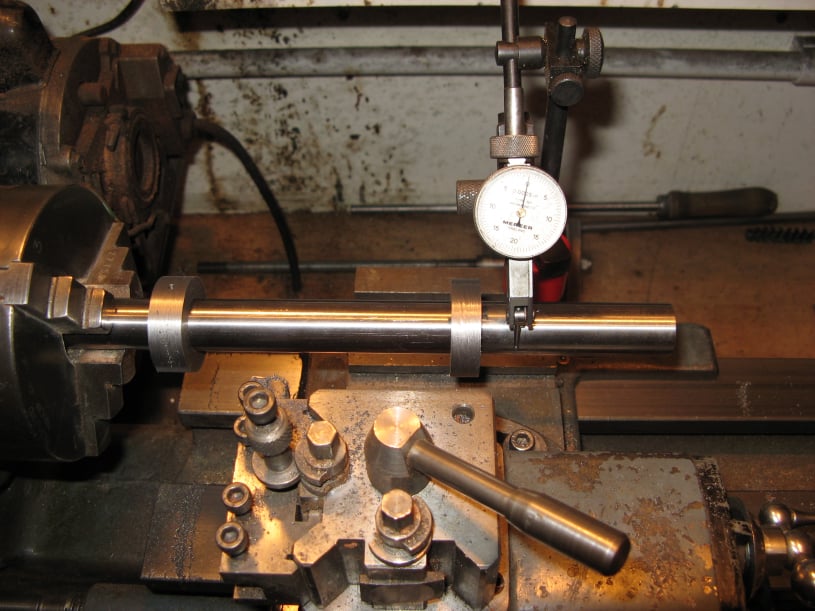
In this case, the difference in diameters was 34.8mm - 34.75mm = 0.05mm
So the tool at the tailstock end needs to move half of this amount = 0.025mm.
The DTI was placed as shown on the front of the bar, and the bed lifted at the front to move the needle by 0.025mm.
After this adjustment another light test cut should be taken to test the result.
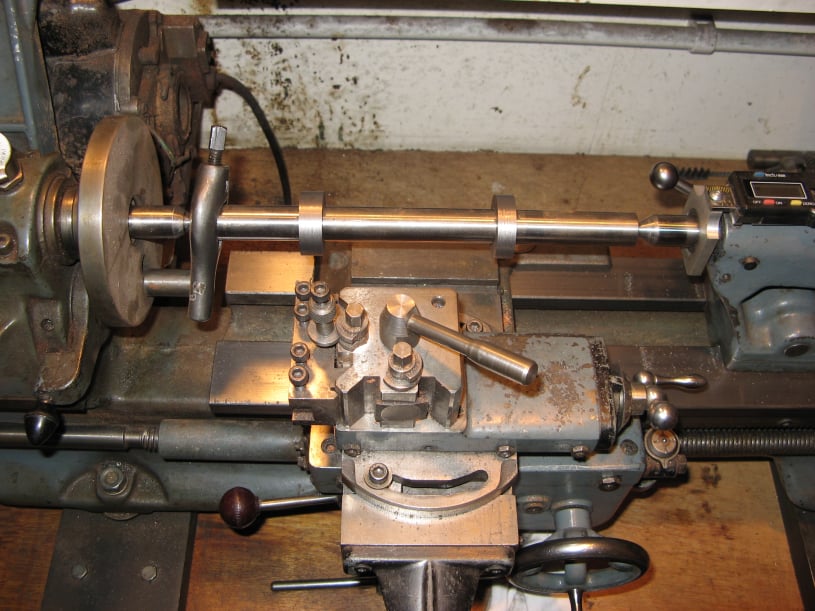
To test the alignment of the tail stock the same bar can be used, this time mounted between centres. The same process is followed to take light test cuts followed by comparative measurements near the chuck and tailstock, to detect if any adjustment is needed.
Once in line the tailstock barrel can be extended and the test repeated to check for any angular mis-alignment. It the tailstock angle is adjusted then the alignment check should be repeated once more.
HTML Website Generator